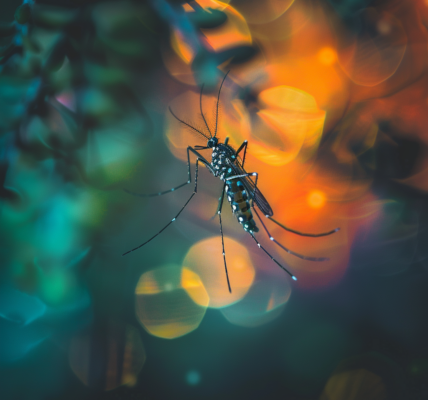Recent research from North Carolina State University has unveiled a surprising downside to the long-standing fight against malaria, particularly highlighting the unintended consequences of insecticide-treated bed nets and indoor insecticide spraying. While these methods have been instrumental in reducing malaria transmission by preventing mosquito bites, they have inadvertently contributed to the resurgence of other household pests, notably bed bugs, cockroaches, and flies.
For decades, insecticide-treated bed nets have been a cornerstone in the battle against malaria, a disease that poses a significant threat globally. These nets, along with indoor spraying, have not only targeted mosquitoes but also suppressed populations of various household pests. However, new findings indicate that as these non-target pests develop resistance to the insecticides, communities are facing a troubling resurgence of these insects.
Chris Hayes, a PhD student at NC State and co-corresponding author of the study published in Proceedings of the Royal Society B, emphasized that the primary intent of these insecticide-treated nets was not to eliminate household pests. Yet, their effectiveness in doing so has led to a paradoxical situation where the very tools designed to combat malaria are now associated with the return of unwanted household insects. “These insecticides are not working as effectively on household pests anymore,” Hayes stated, highlighting a growing concern among communities.
Moreover, the study reveals that as these household pests become more prevalent, there is a rising community distrust towards these insecticide treatments. Many households are abandoning the use of bed nets and insecticides, which, in turn, is contributing to increased malaria rates. This shift underscores a complex relationship between pest management and public health, where the benefits of mosquito control are overshadowed by the re-emergence of other pests.
Coby Schal, a professor of entomology and co-corresponding author of the paper, noted that while non-target effects of pest control strategies are often considered detrimental, in this case, they had previously provided unexpected benefits. The initial suppression of household pests was welcomed by many, as it improved living conditions. However, as resistance develops among these pests, the effectiveness of the control measures diminishes, leading to a resurgence that many households find troubling.
Interestingly, the research also highlights a potential link between the use of insecticide-treated nets and the widespread resistance observed in household pests across Africa. Hayes pointed out that the value of these nets may have shifted from primarily reducing malaria transmission to providing a means of controlling other household pests. This evolution in perception could have significant implications for public health strategies aimed at combating malaria.
In addition to the insecticide resistance issue, the researchers acknowledged that other factors, such as famine, war, urban-rural divides, and population displacement, could also contribute to the rising rates of malaria. These complex social and environmental dynamics further complicate the landscape of disease prevention and pest management.
To compile their findings, Hayes conducted an extensive review of existing literature, sifting through over 1,200 academic papers related to indoor pests, malaria, bed nets, and insecticides. After meticulous evaluation, the research team distilled the information down to 28 peer-reviewed studies that met their criteria.
A notable survey from 2022, which examined 1,000 households in Botswana, revealed that while 58% of respondents expressed concern about mosquitoes, more than 40% were primarily worried about cockroaches and flies. This data underscores a shift in public perception regarding pest control and the importance of addressing a broader spectrum of household pest issues.
As the research continues to unfold, it will be crucial for public health officials and policymakers to take these findings into account. The challenge lies in balancing effective malaria prevention strategies with the need to manage household pests, ensuring that communities remain engaged and supported in their efforts to combat both malaria and the resurgence of unwanted insects.
In summary, while insecticide-treated bed nets have played a vital role in reducing malaria transmission, the emergence of household pests like bed bugs and cockroaches presents a new challenge. The findings from NC State serve as a reminder of the complex interplay between pest management and public health, highlighting the necessity for innovative solutions that address both issues simultaneously.





